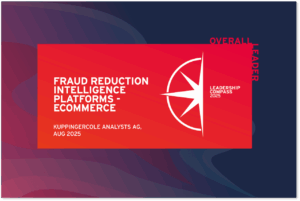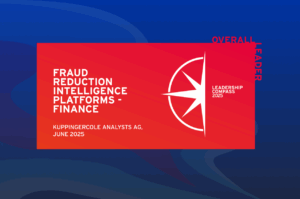Fraud is evolving. Sophisticated tactics and advanced technologies make fraud investigations increasingly complex, leaving analysts buried under mountains of data. The cost? Critical patterns are missed, investigations drag on and organizations remain vulnerable.
But what if there was a way to turn the tide — automating investigations, cutting detection time and delivering consistently high-quality analysis? That’s exactly what our new GenAI-powered investigation is built to do.
Beyond basic AI: The power of language models in fraud analysis
While many solutions use AI to analyze fraud data, Mosaic AI Insights takes it a step further by operating as an LLM-based AI agent.
Most AI-powered tools act solely as passive query systems — you ask them questions about your data and they provide answers. Mosaic AI Insights, however, functions as an autonomous LLM-based agent, independently deciding which data to analyze and how to process it. Like a skilled investigator, it actively processes vast amounts of fraud data, automatically identifies significant patterns and translates complex technical findings into clear, actionable narratives that everyone can understand — all in seconds.
Our implementation leverages advanced language models to do what they do best: understanding context, identifying patterns and communicating insights in natural language. This means fraud investigators no longer need to spend hours crafting reports or explaining technical findings to stakeholders, because AI Insights makes suggestions automatically, reducing the time from detection to action.
Think of it this way: Mosaic helps clear the metaphorical “piles of reports” sitting on an analyst’s desk, waiting to be processed. Instead of time slipping away as critical insights sit buried in data, the system proactively identifies the patterns and delivers the story. The result? Faster decisions, less effort and actionable insights when you need them most.
Automating the investigation process
Today, our AI capabilities focus on two critical aspects of fraud investigation that typically consume massive amounts of analyst time. First, it analyzes fraud campaigns by examining temporal patterns, automatically identifying coordinated attacks and their evolution over time. Second, it maps fraud rings by analyzing networks of interconnected entities, revealing sophisticated operations that might otherwise go undetected.
From complex graphs to clear insights: A real-world example
When investigating fraud rings, analysts typically start with complex network visualizations showing interconnected users, devices and IP addresses. At first glance, these visualizations can be overwhelming — a maze of nodes and connections that hide critical patterns in plain sight. This often leads to “analysis paralysis,” where the sheer volume of data and open-ended research slow down productivity and delay actionable insights. Even experienced analysts might need hours to piece together the full story of what’s happening.
This is where our AI analytical capabilities truly shine. Let’s look at a recent fraud ring investigation that demonstrates how our system transforms complex graph data into actionable insights.
Starting with a dense network visualization of connected entities, Mosaic AI automatically analyzed the patterns and relationships, producing a clear narrative that revealed a sophisticated fraud operation:
- Coordinated automation: Multiple indicators revealed an organized network of fraudulent activity:
- 88 devices operating through just 23 IP addresses, showing significant concentration.
- A single IP address controlling 47 devices, indicating centralized orchestration.
- Abnormal user behavior:
- Five user accounts were responsible for most activity, each managing 11–23 devices, far exceeding normal usage patterns.
- Automation patterns:
- Behavioral signatures indicated 98% automation rates across key accounts, with synchronized timing and identical browser configurations.
- Device and location manipulation:
- 98.7% of devices showed evidence of spoofing and location manipulation, pointing to systematic attempts to evade detection.
What makes this analysis particularly powerful is how it combines multiple layers of insight. The system automatically:
- Identified patterns where many devices were being controlled from just a few network locations.
- Detected abnormal account behavior where users managed far more devices than typical
- Uncovered sophisticated automation patterns across the network
- Spotted systematic attempts at device manipulation and location spoofing
Behind this clear narrative lies sophisticated data analysis. The system processes numerous metrics — including velocity patterns, timing correlations and geographic distributions — while tackling the overhead of analyzing and interpreting raw data, improving data quality and integrating these insights into business workflows. By automating these steps, Mosaic AI ensures investigators aren’t overwhelmed by raw data but are instead equipped with the most significant patterns that indicate fraudulent activity. The result is a clear, actionable story that both technical and non-technical stakeholders can understand and act upon, seamlessly supporting fraud operations and research teams.
Reducing time to mitigation: Enabling cyber-fraud fusion
In fraud prevention, the importance of metrics like Mean Time to Mitigation (MTTM) cannot be overstated. Reducing the time it takes to detect and act on fraud is critical for minimizing losses and protecting users. Yet, in practice, most organizations struggle to measure efficiency through KPIs like MTTM. Fraud is often detected after the fact, with insights from investigations rarely translating into actionable preventive measures.
This is where our AI Insights steps in — not just as a solution, but as a catalyst for change. Our innovative approach leverages semi-supervised learning and advanced analytics to strengthen the relationship between isolated fraud incidents and their underlying sources, such as tactics, vulnerabilities and identities. By doing so, we help organizations close the gap between fraud operations and the more advanced cybersecurity domain, where metrics like MTTM are already central to success.
Transmit Security is uniquely positioned to lead this shift. As a cybersecurity-first company, we bring deep expertise to the evolving world of fraud operations. By enabling the fusion of fraud and cybersecurity teams — a trend highlighted by industry analysts but implemented by few — we empower organizations to collaborate more effectively and align their operations. AI Insights not only automates investigation workflows but also fosters a mindset shift, encouraging teams to adopt measurable KPIs like MTTM and focus on proactive prevention.
A bridge between technical detection and human understanding
What makes AI Insights particularly powerful is its ability to serve as a bridge between technical detection systems and human decision-makers. By automatically generating clear, actionable narratives from complex technical data, it enables faster, more informed responses to fraud threats while reducing the burden on skilled analysts.
The system currently processes data through a sophisticated pipeline that includes structured data processing, network analysis and AI-powered narrative generation. This systematic approach ensures that all relevant patterns are identified and clearly communicated, while maintaining the high standards of accuracy required for fraud investigation.
Current capabilities, future vision and the road ahead
Mosaic AI Insights is already transforming how fraud teams operate. By turning complex fraud data into clear, actionable narratives, it eliminates the manual effort of interpreting raw data and ensures consistent, high-quality reporting across all investigations. It’s not just about saving time — it’s about empowering investigators to focus on what matters most: preventing fraud.
But we’re not stopping there. Our vision is to make AI Insights a fully autonomous investigation agent. Imagine a system that not only identifies patterns but also makes real-time decisions about investigation paths, selects and executes the right tools and proactively uncovers emerging threats. While this level of automation is still on our roadmap, the current version is already making a difference by automating critical parts of the fraud investigation workflow.
The road ahead is exciting, and we’re just getting started.
Ready to transform how your team investigates fraud? Contact us to learn more about how Mosaic AI capabilities can enhance your fraud investigation while significantly reducing the time and effort required for thorough analysis.




